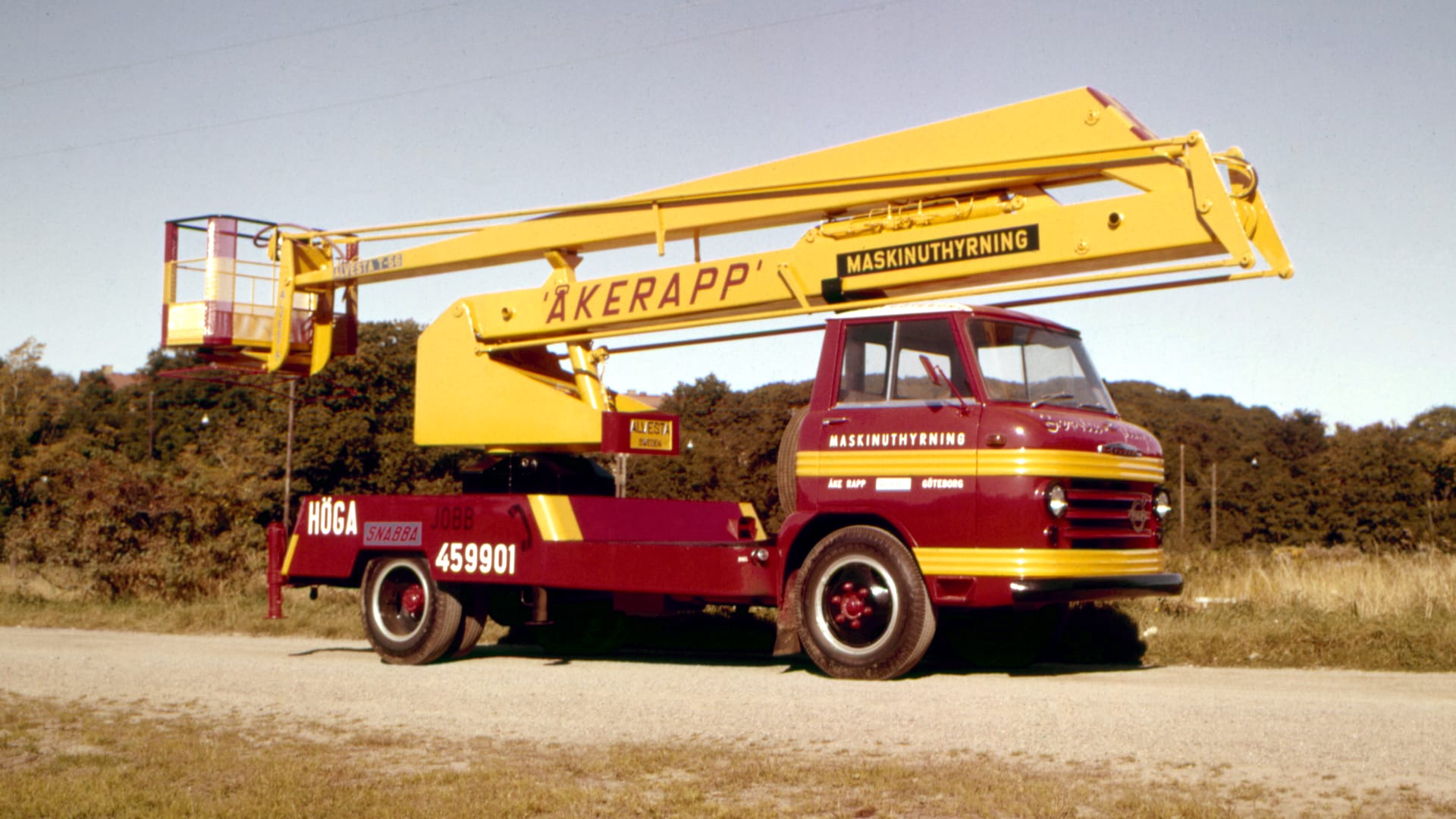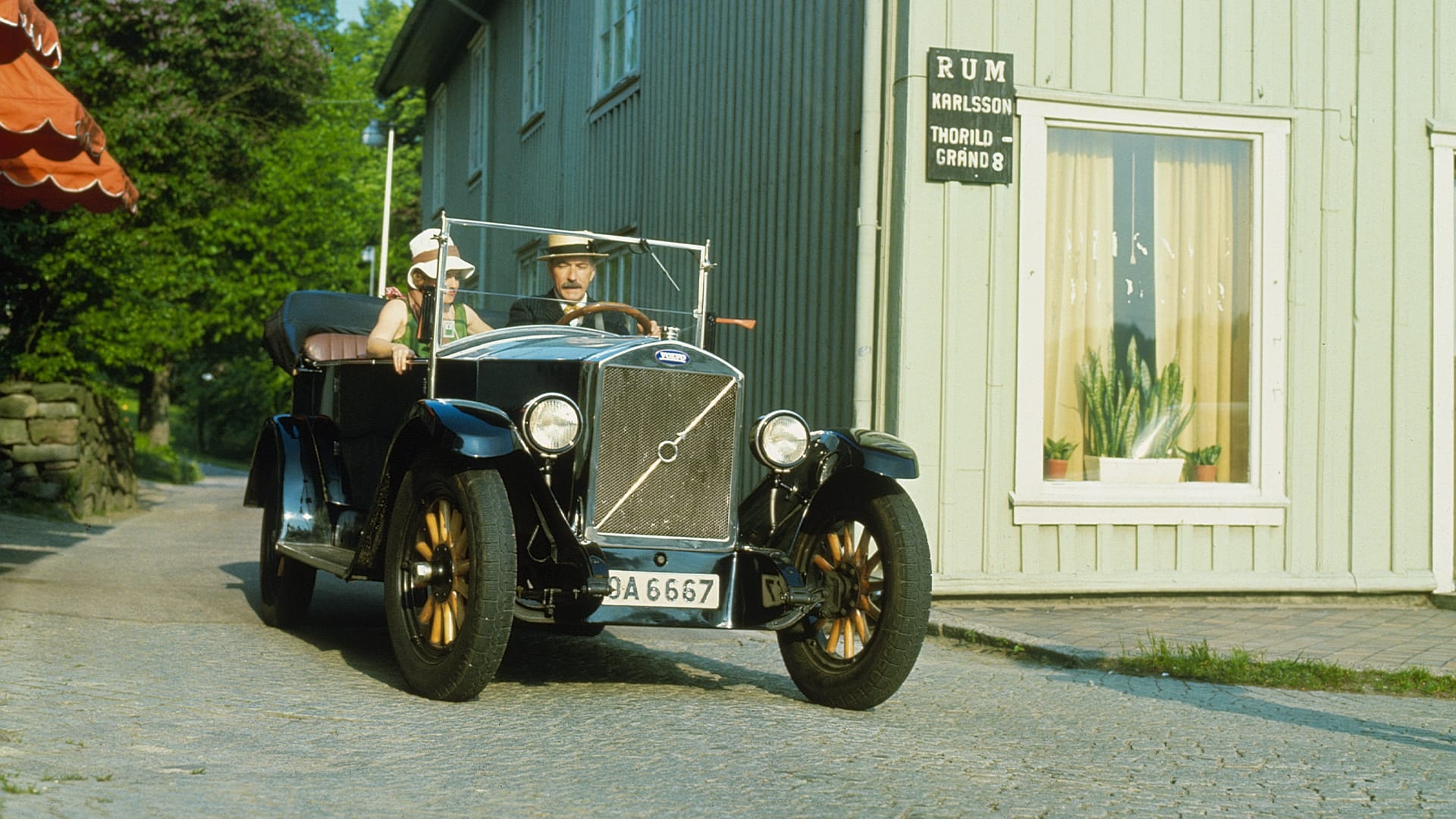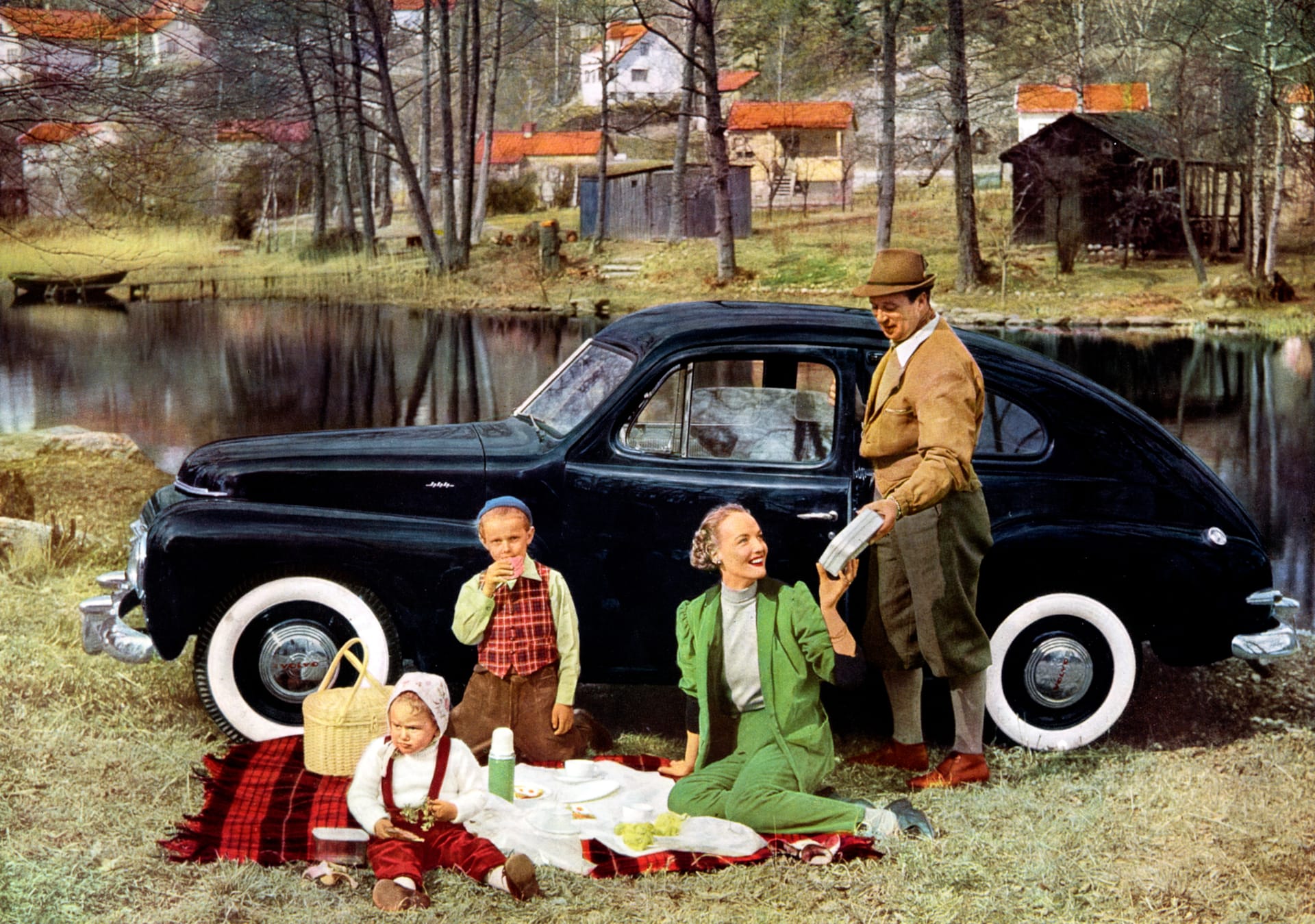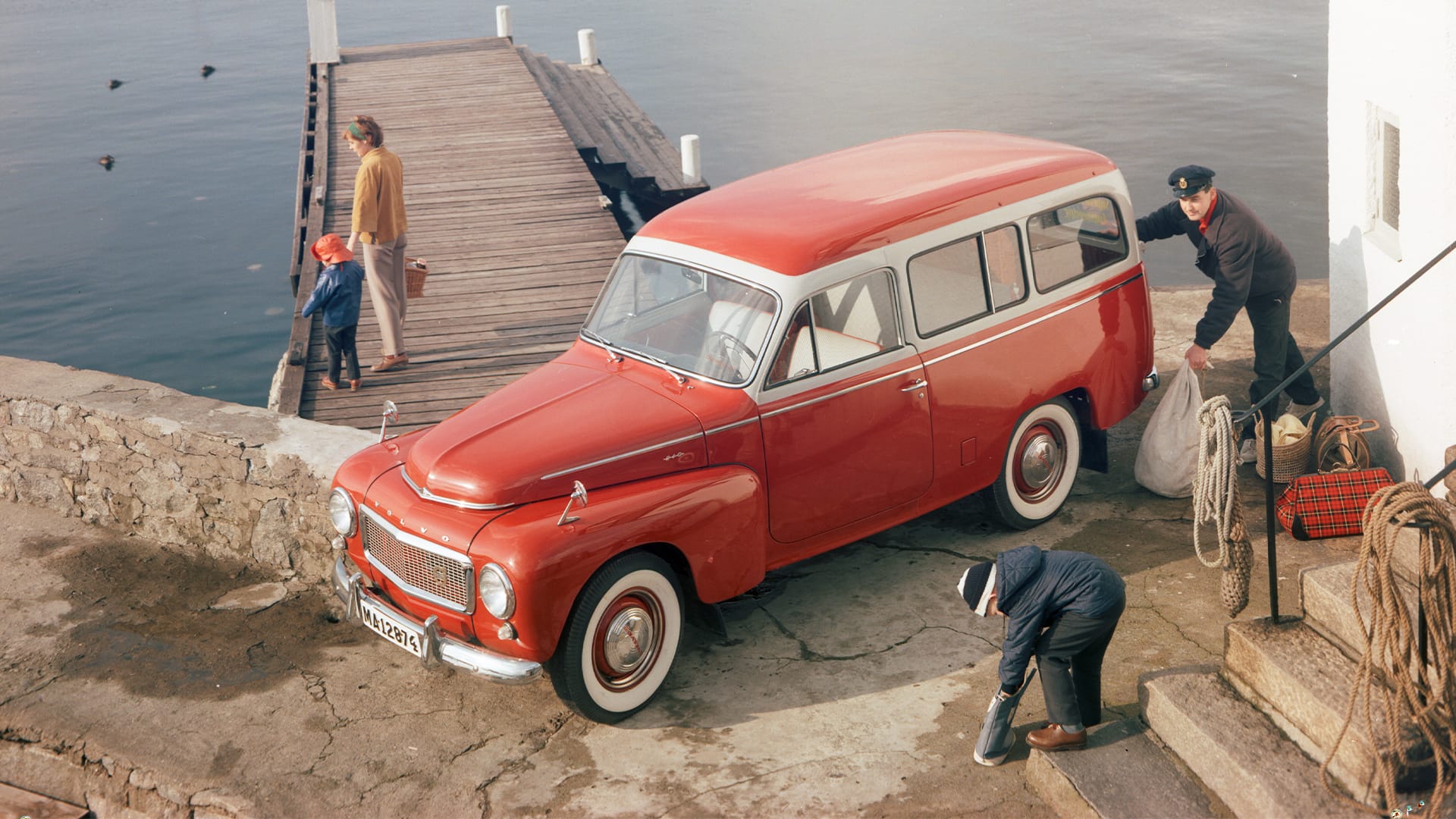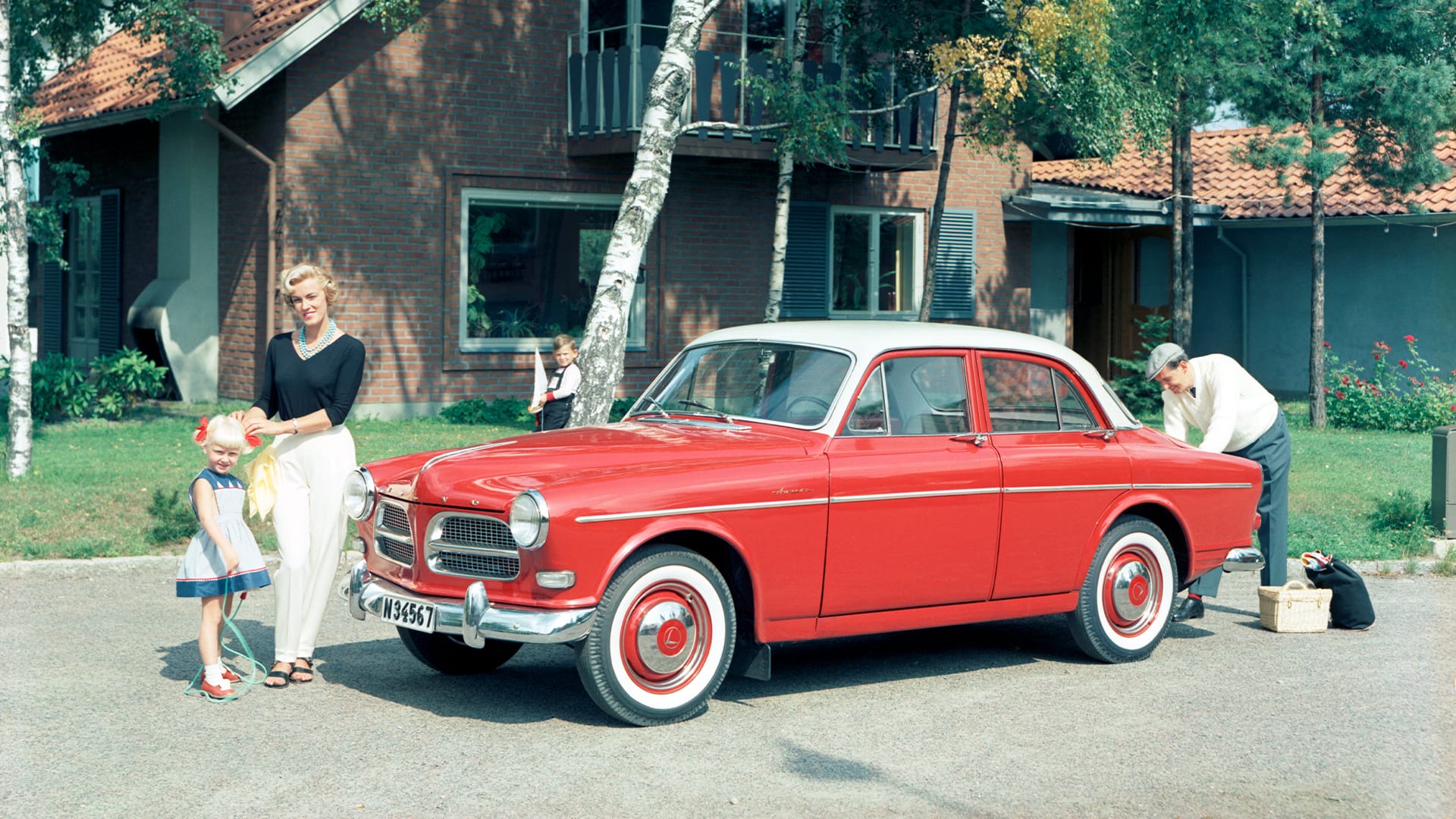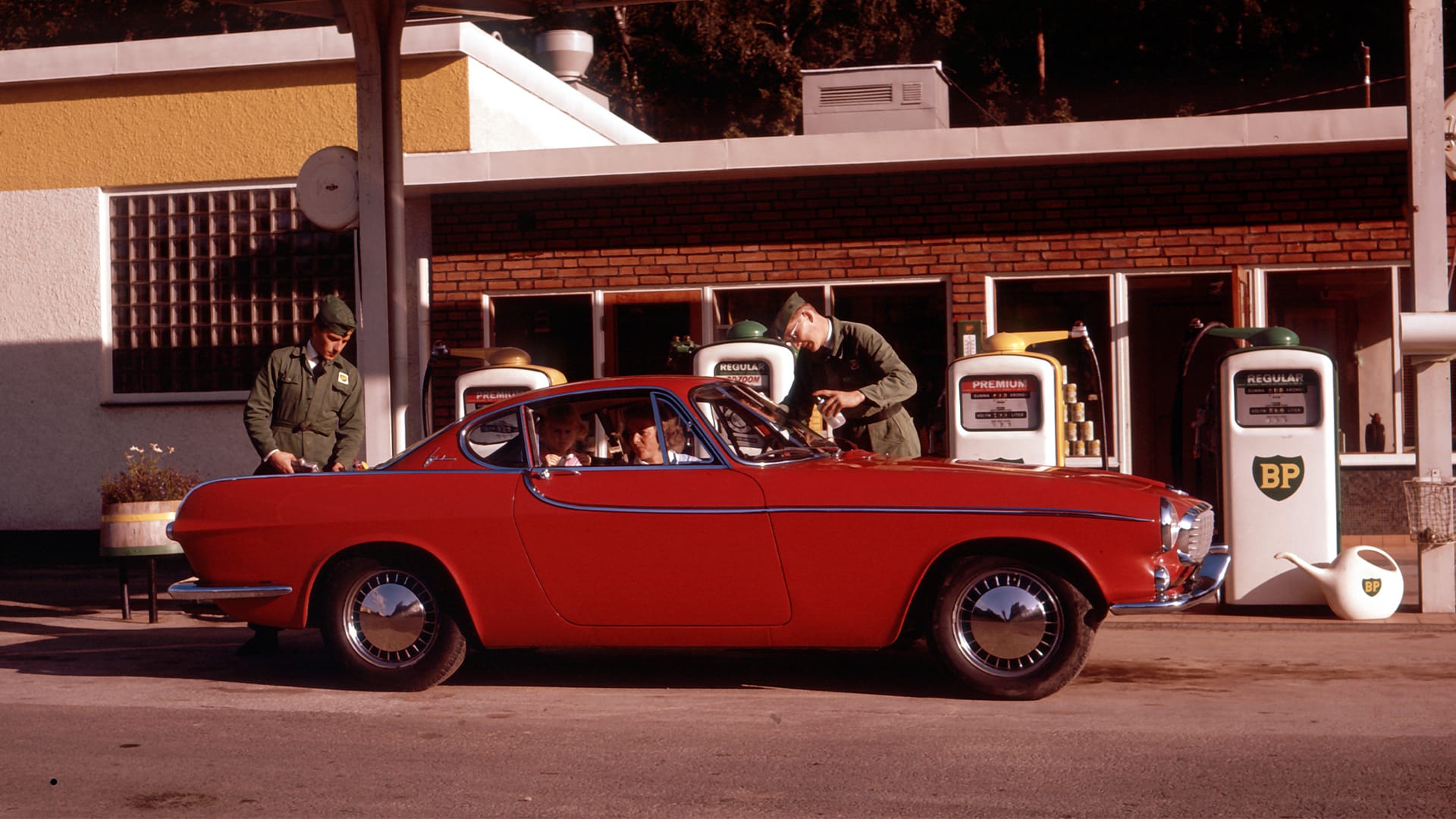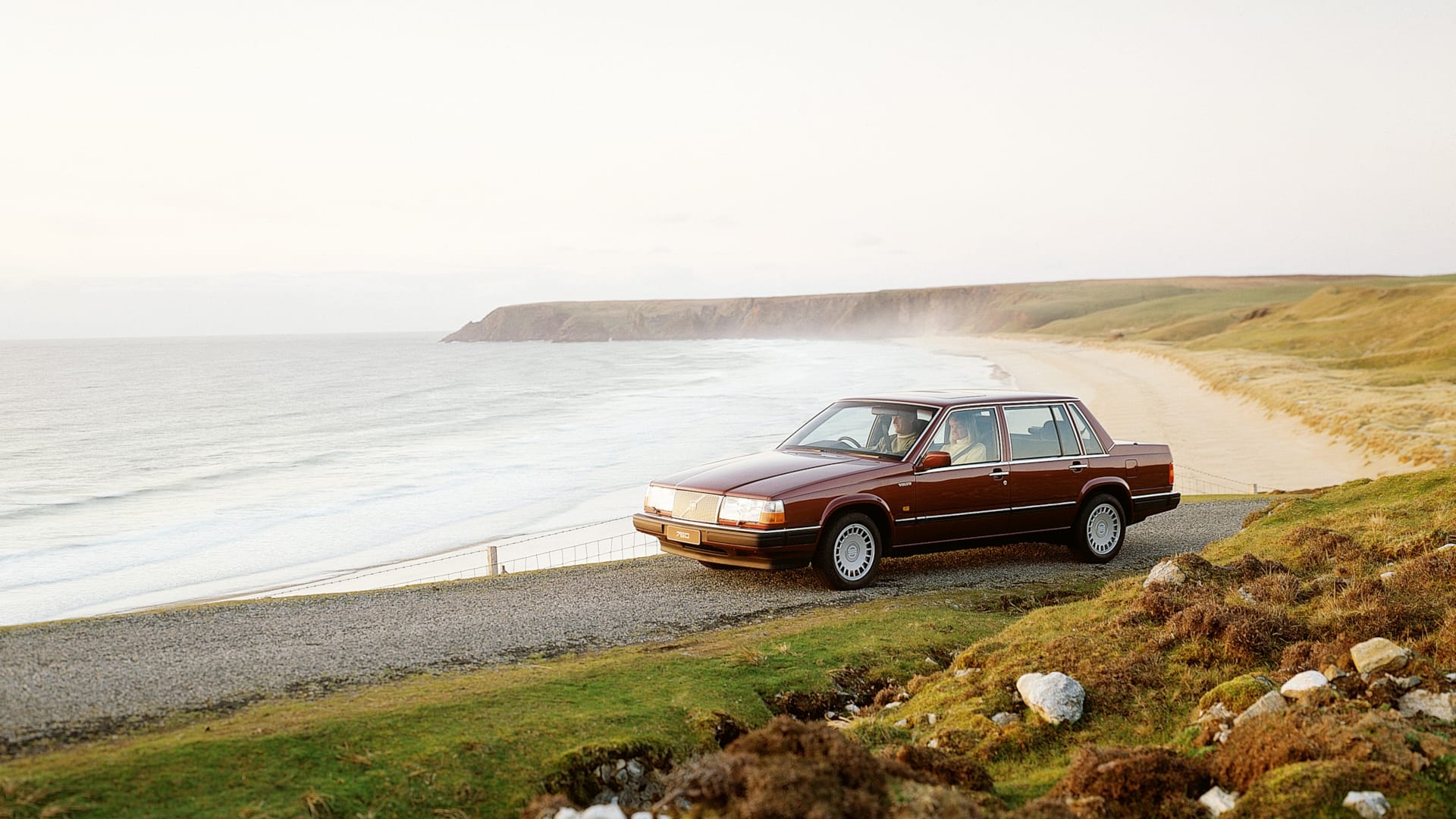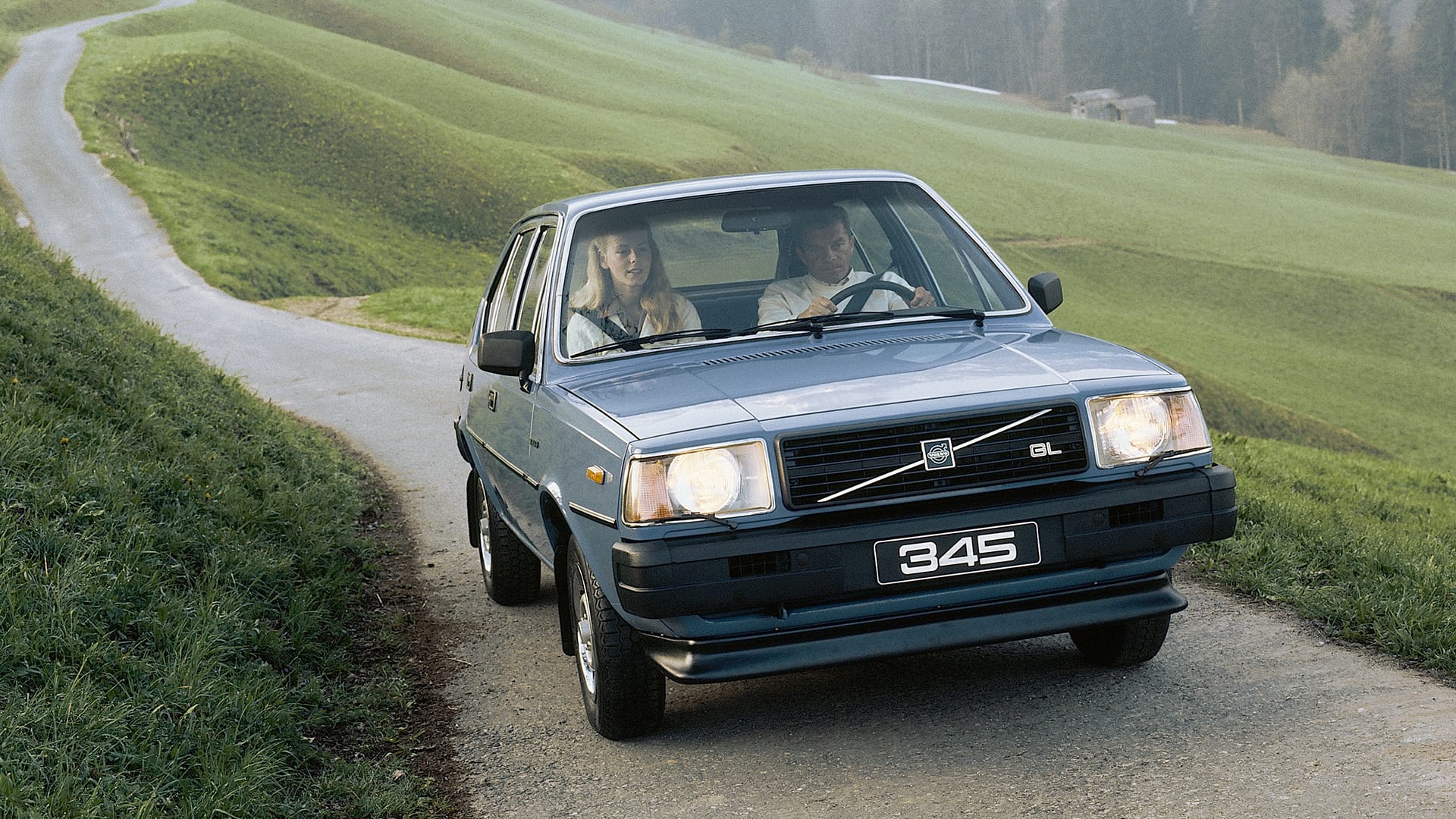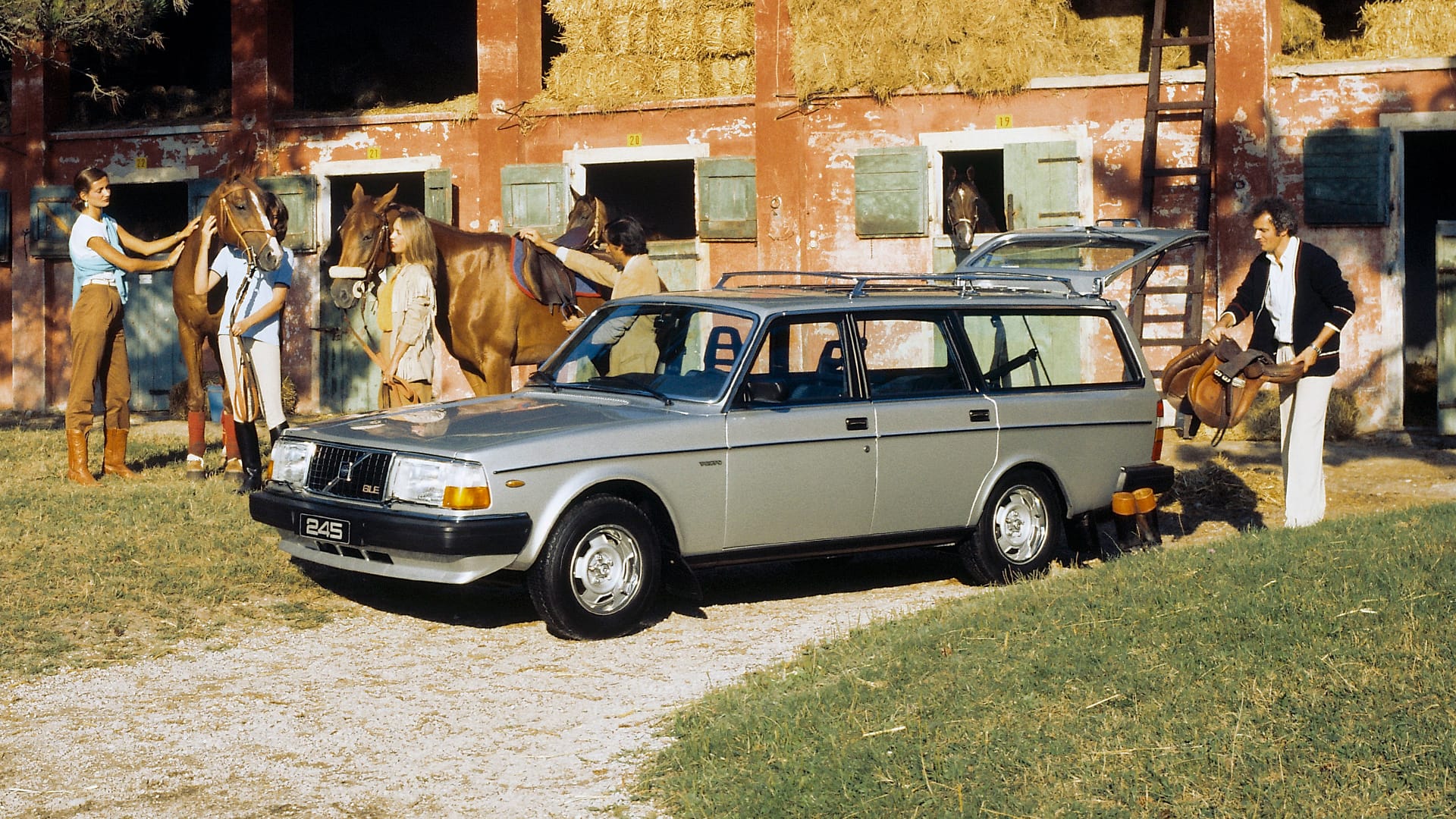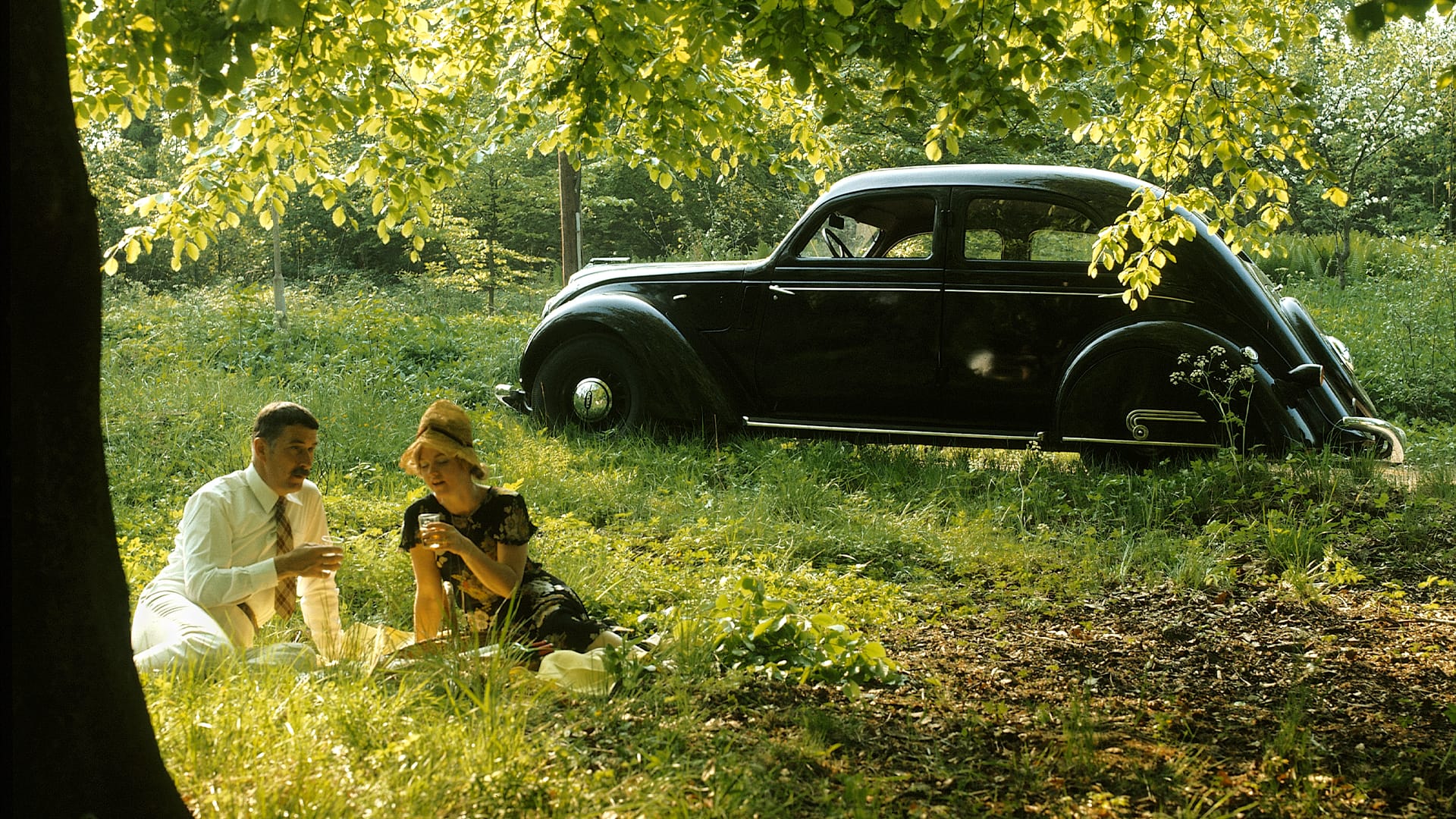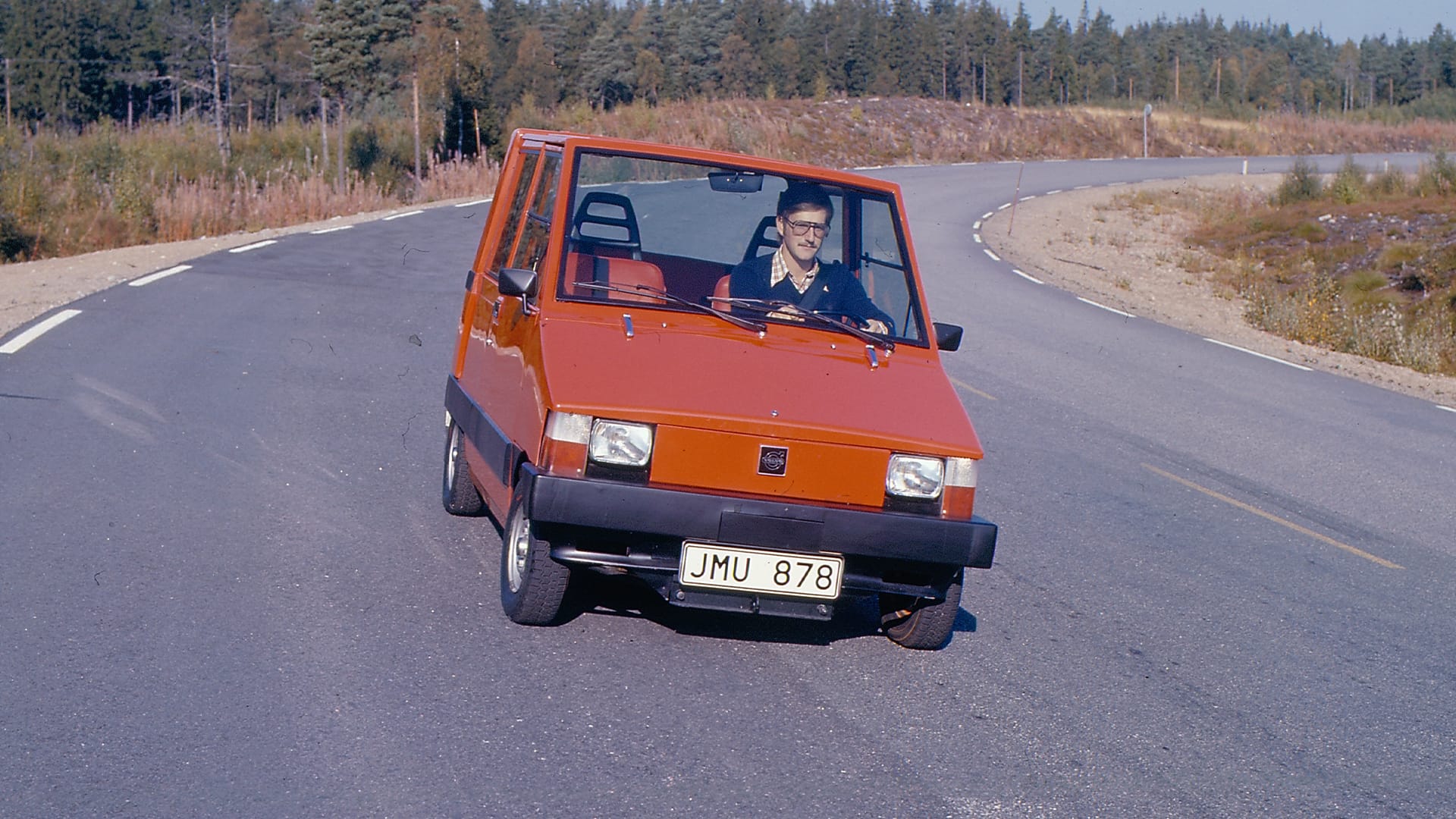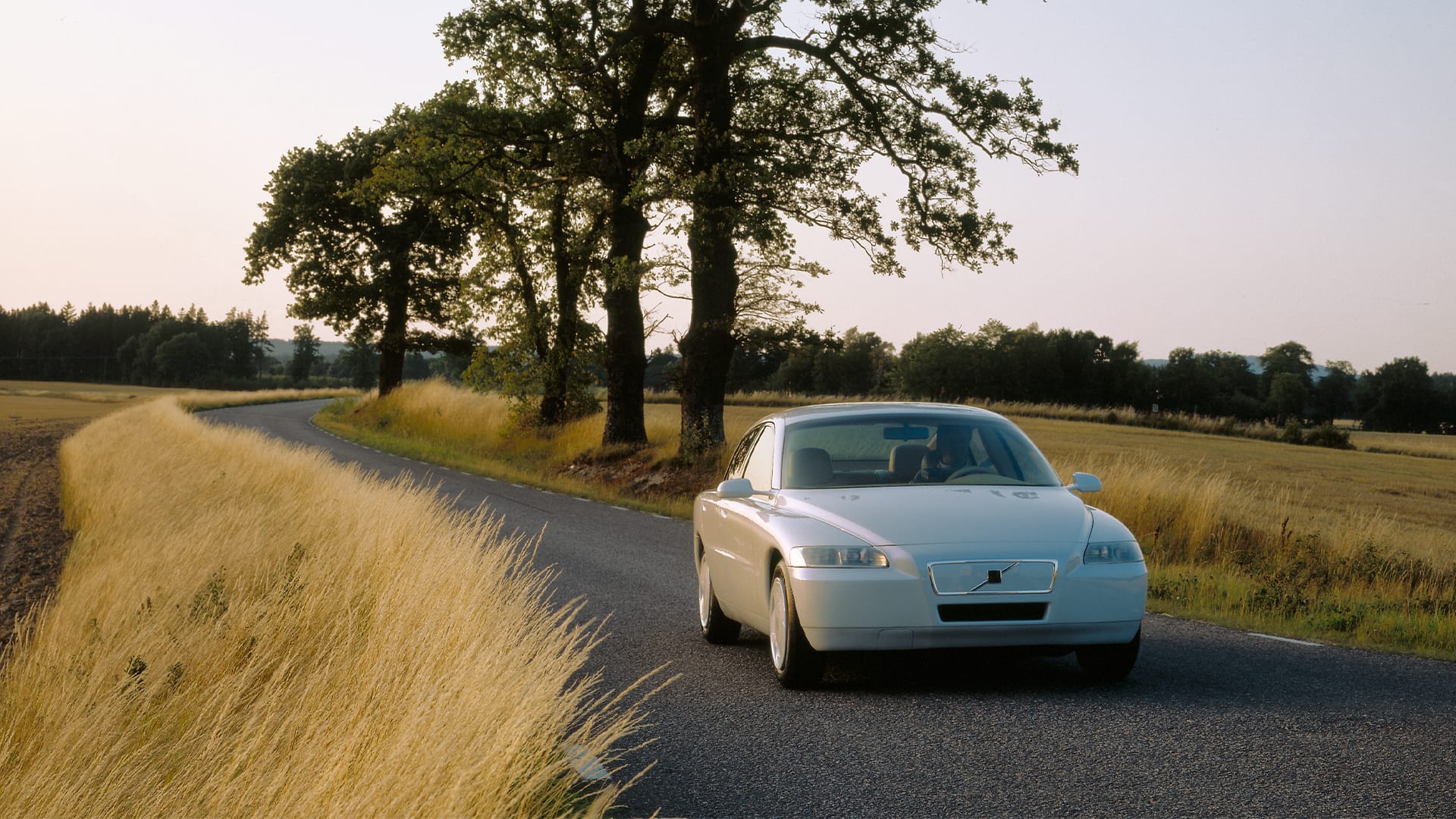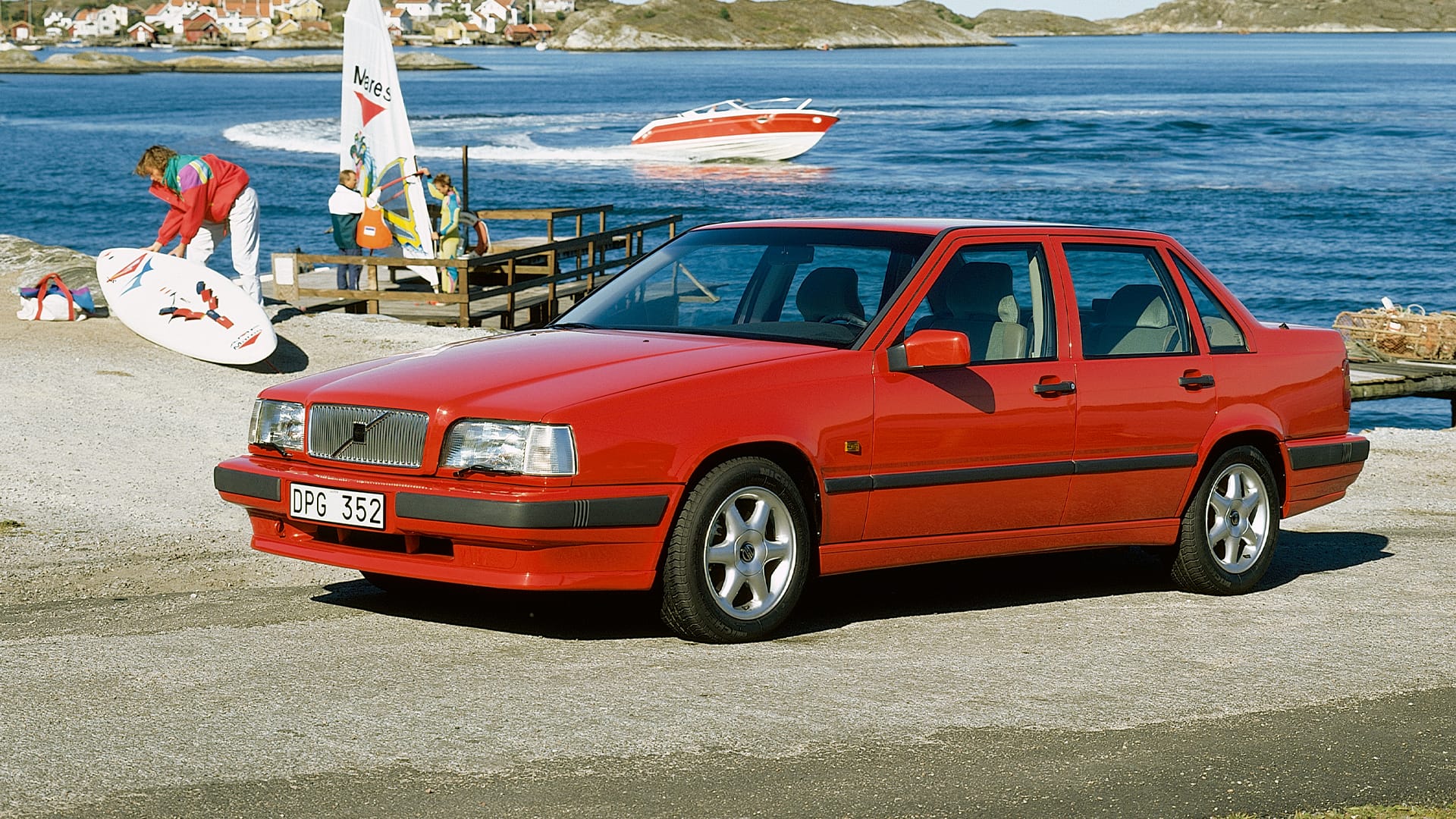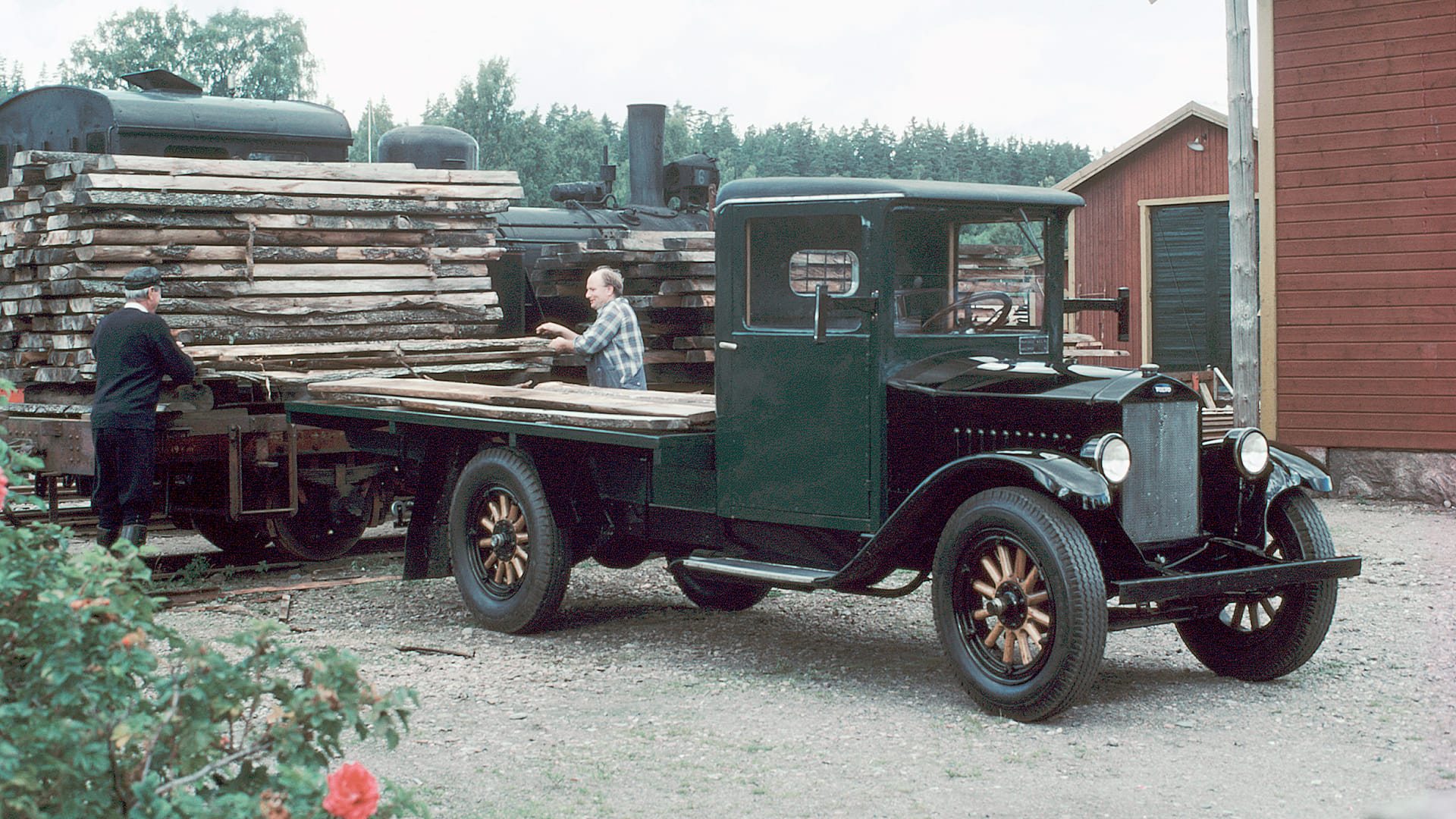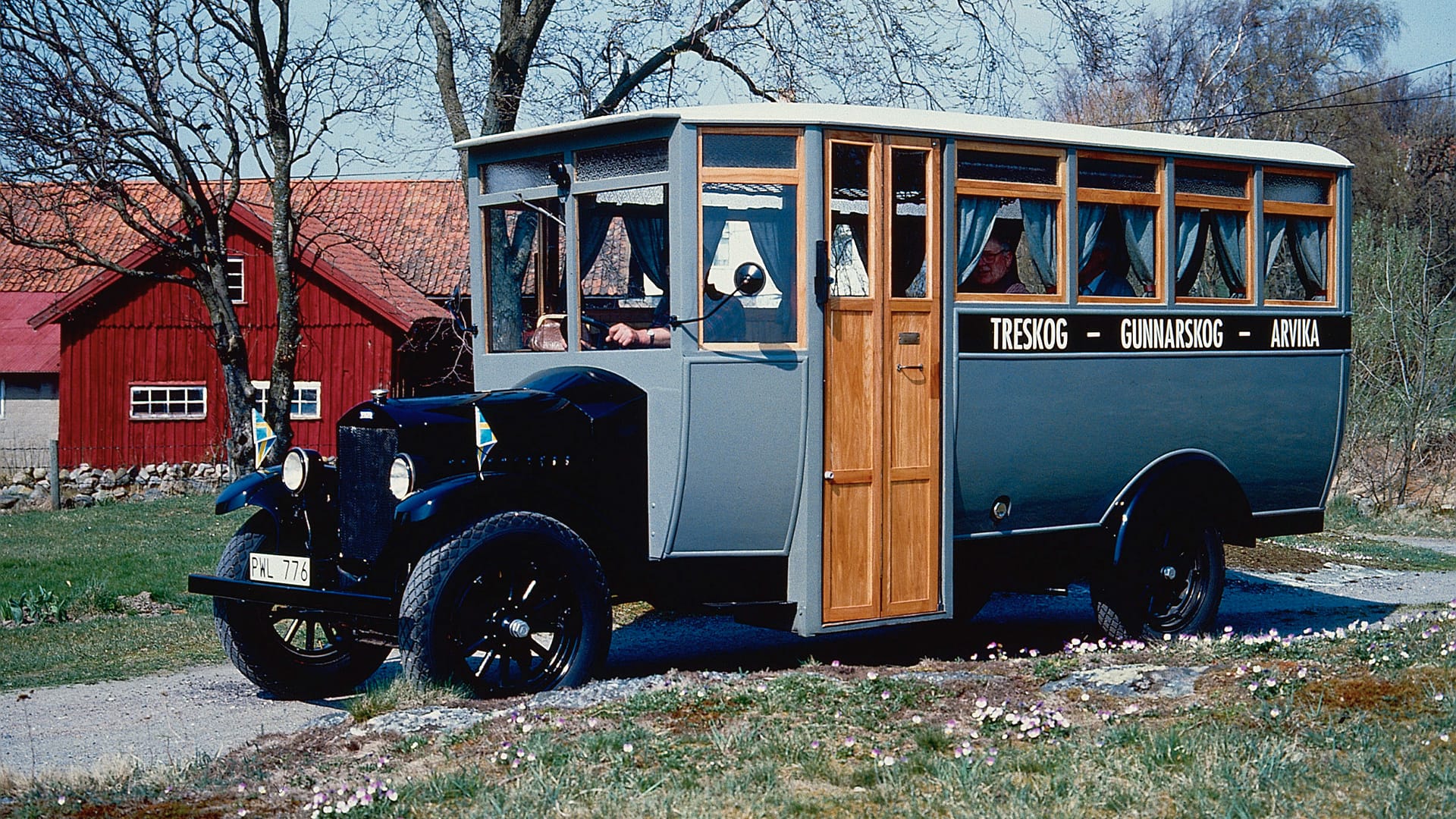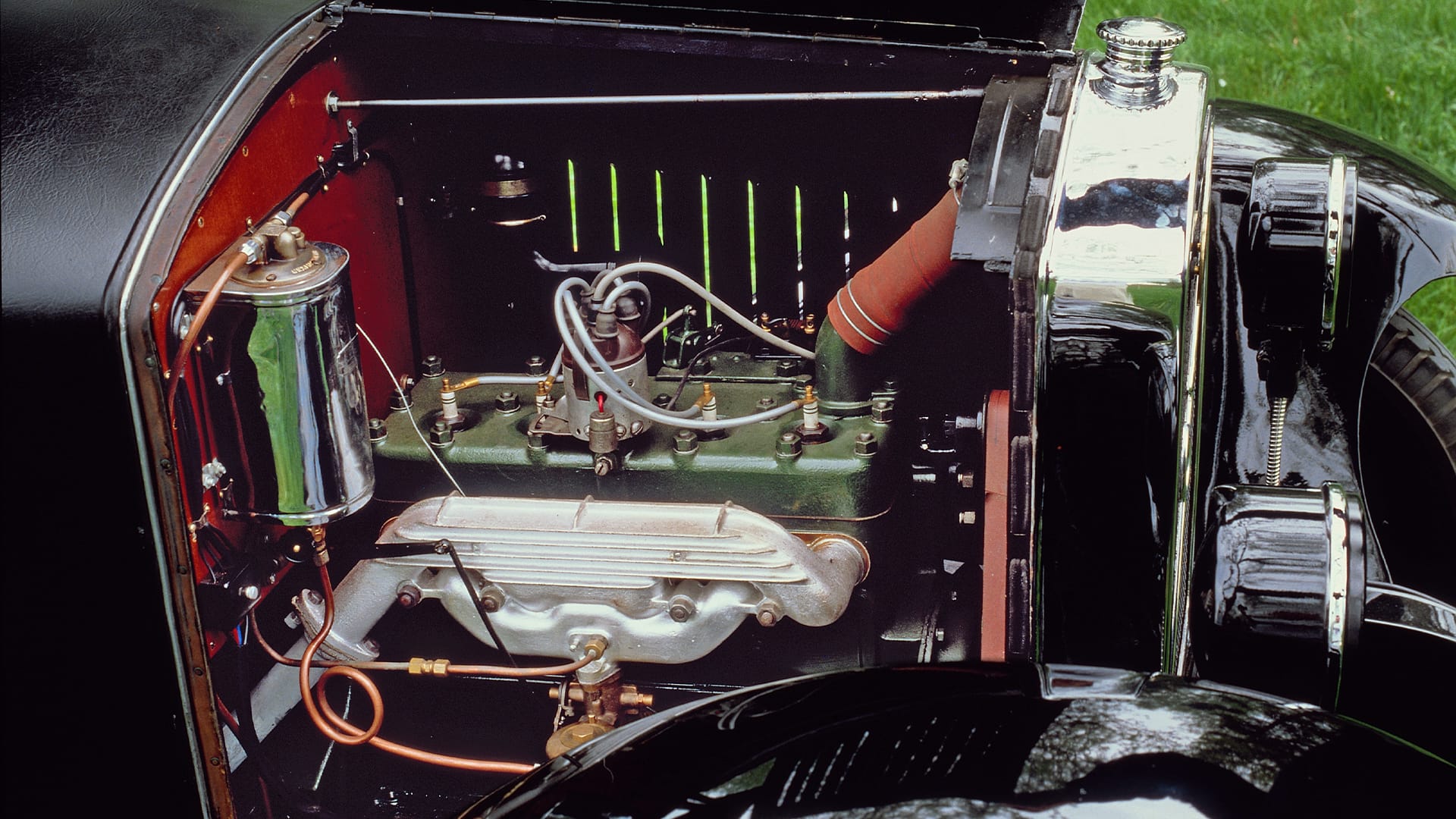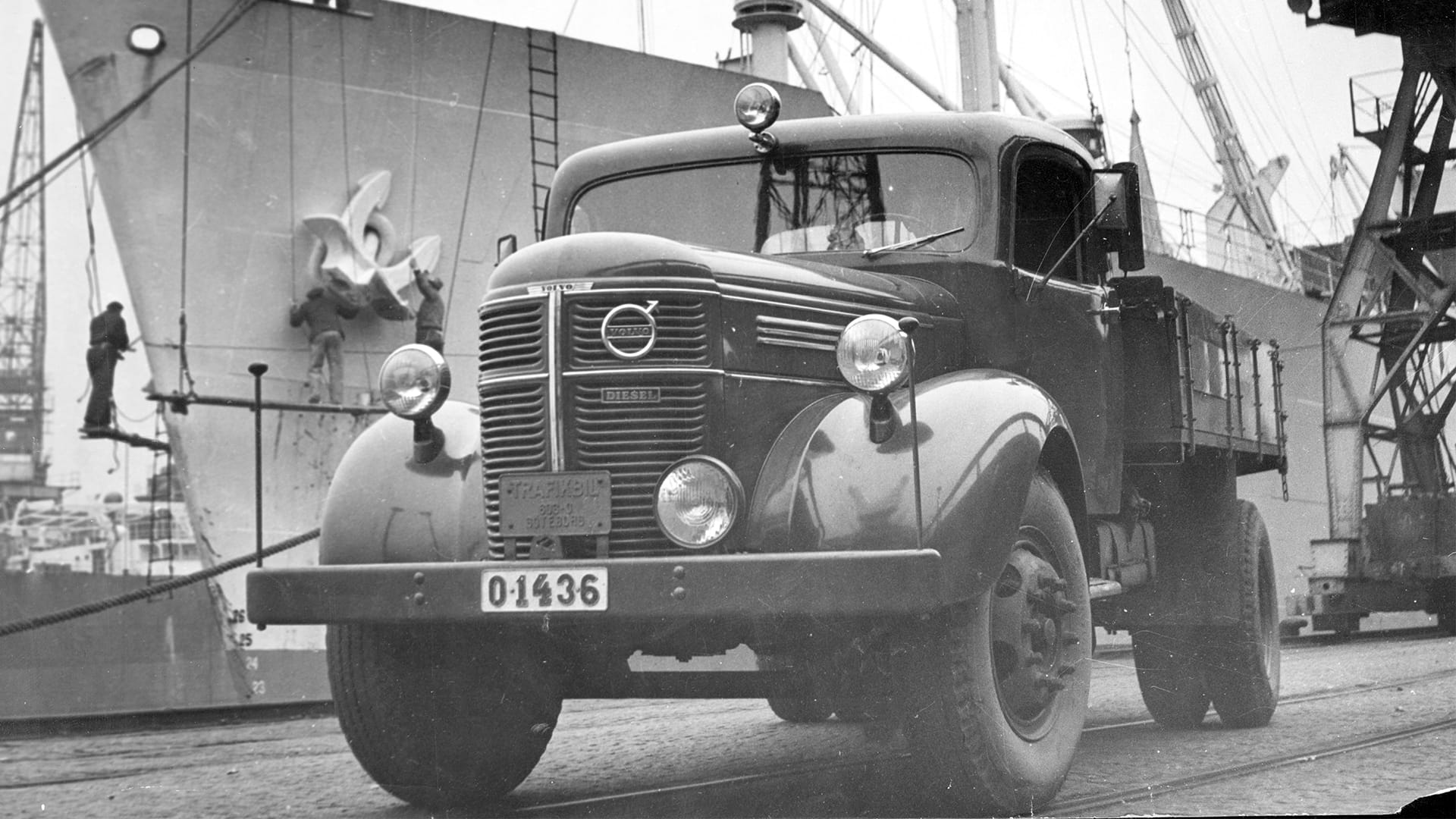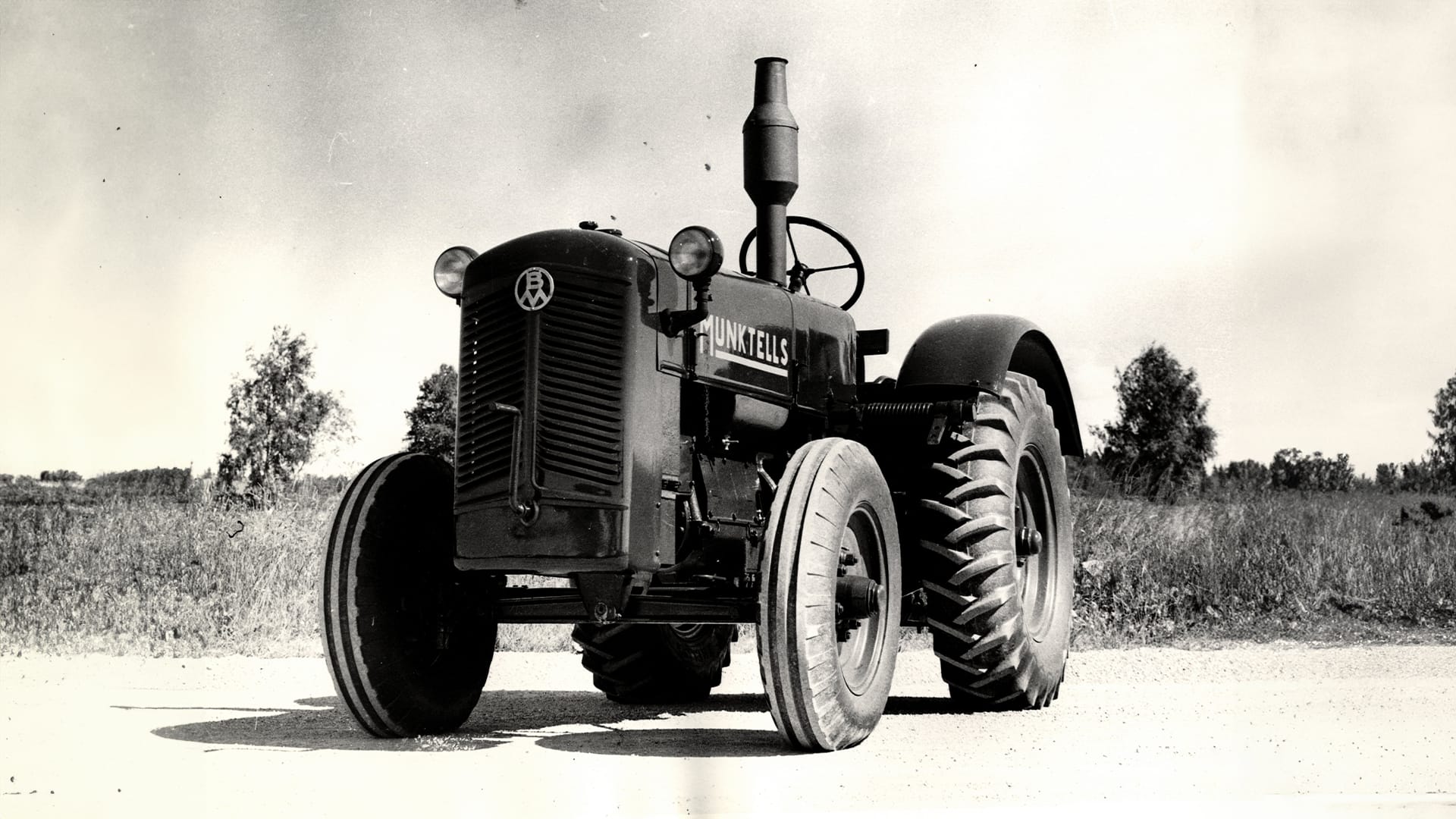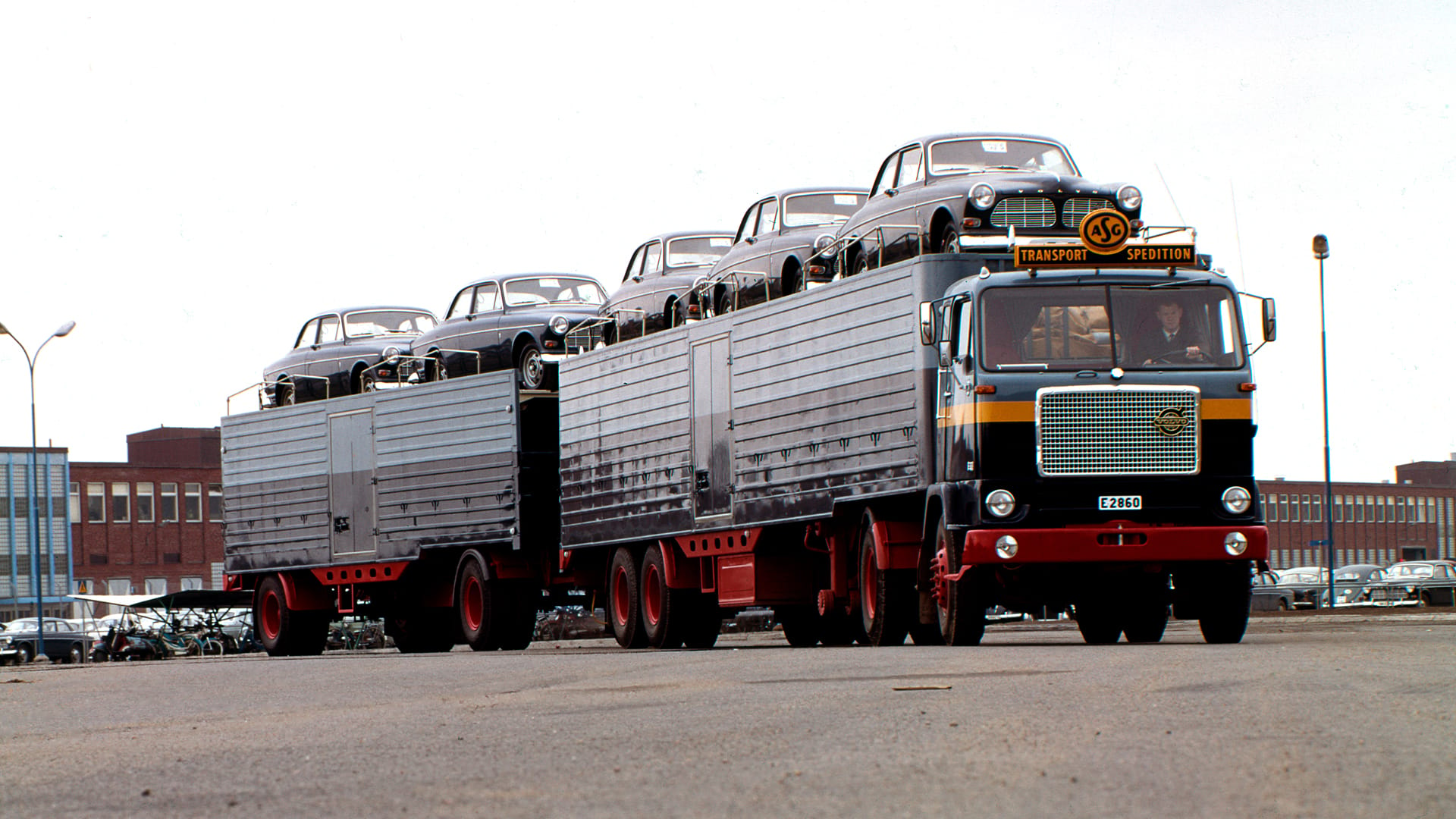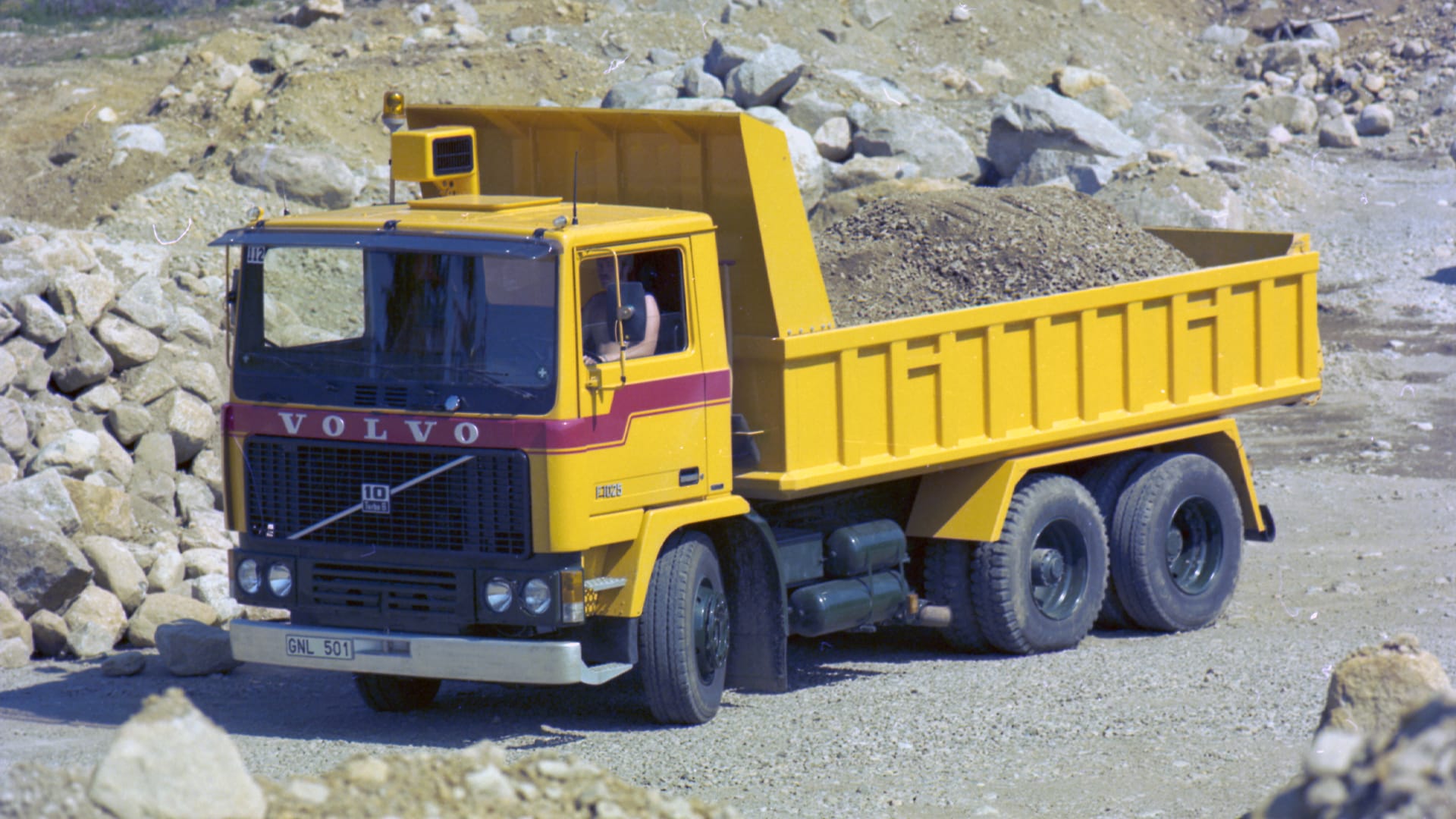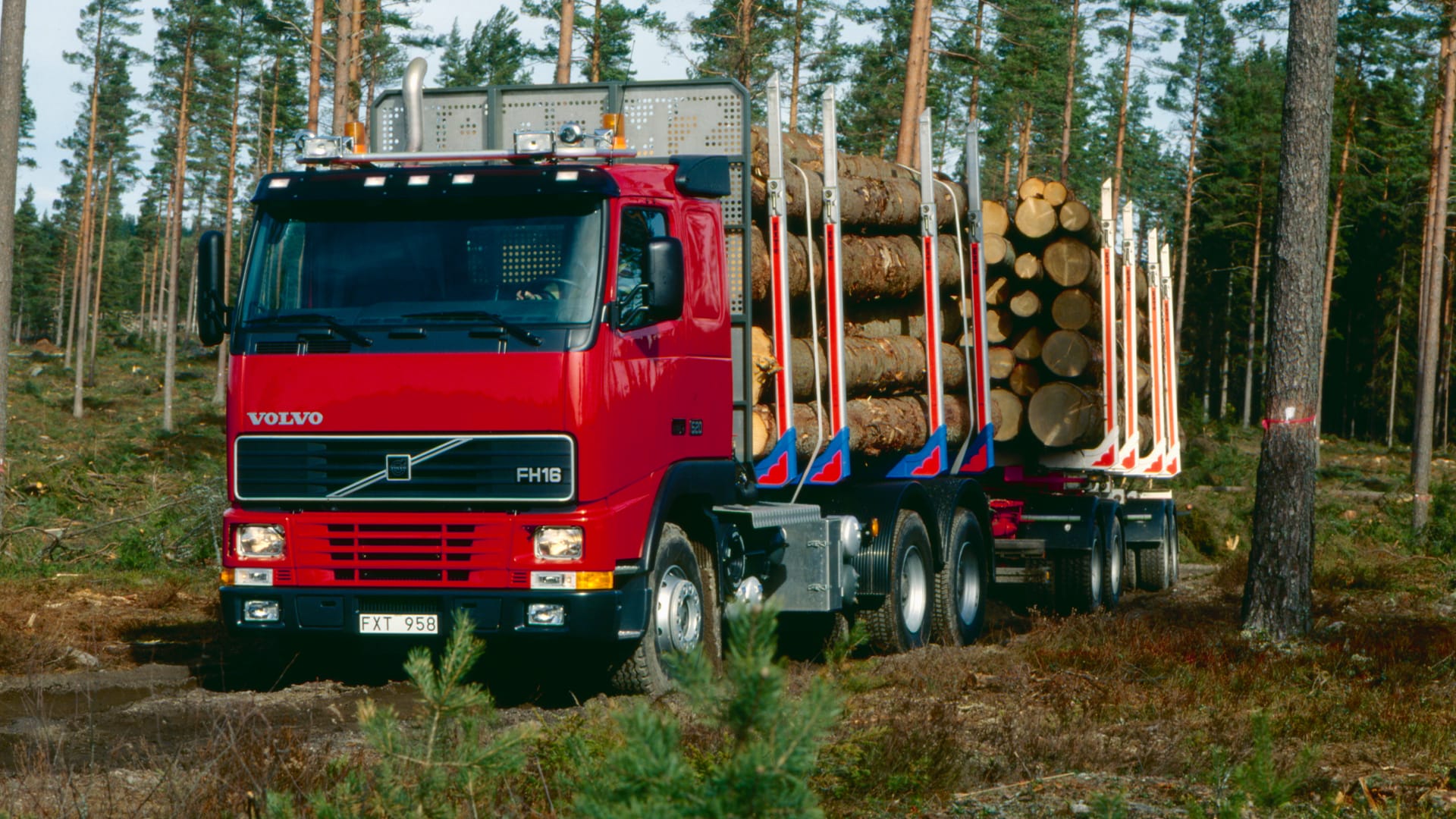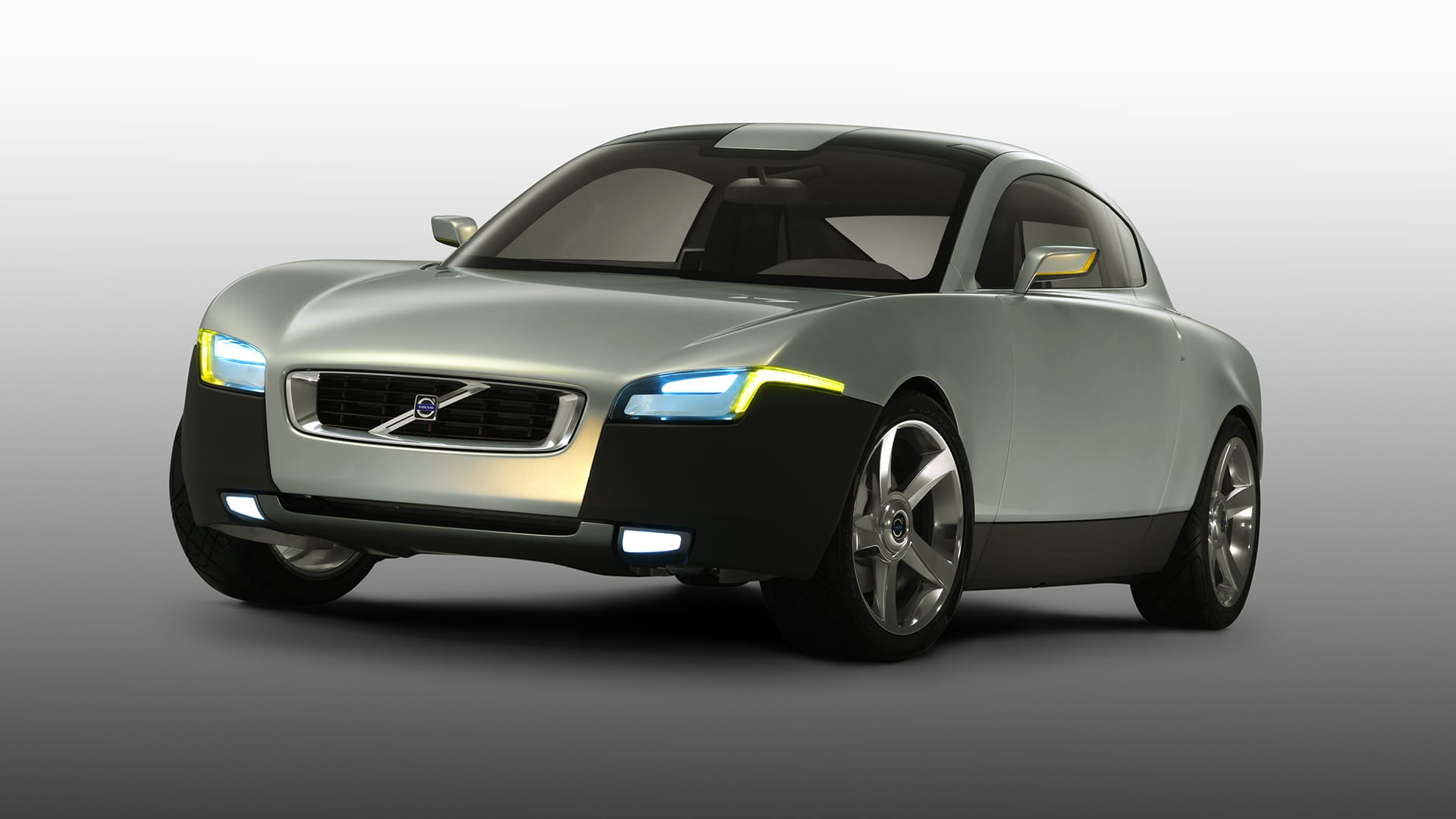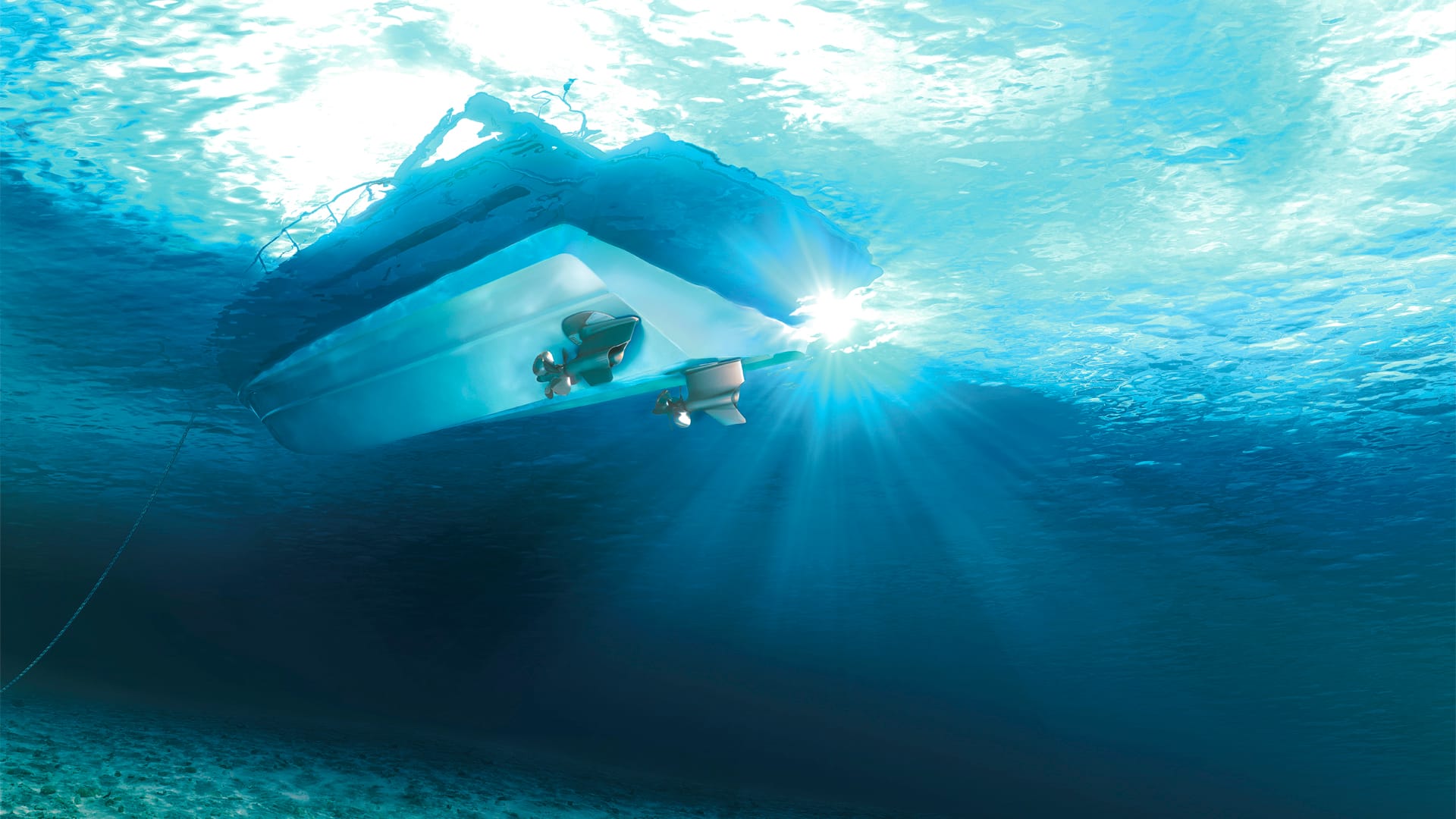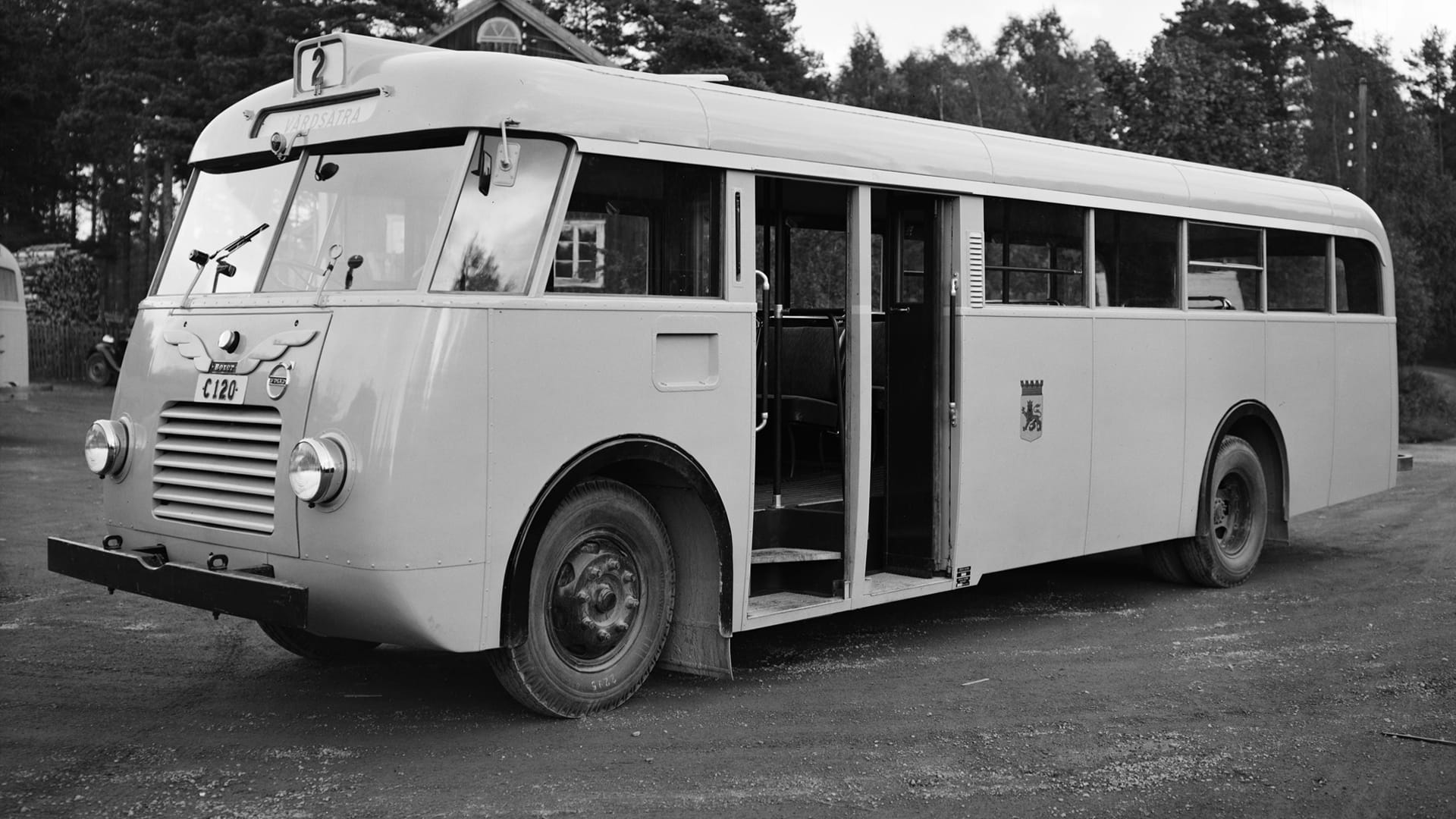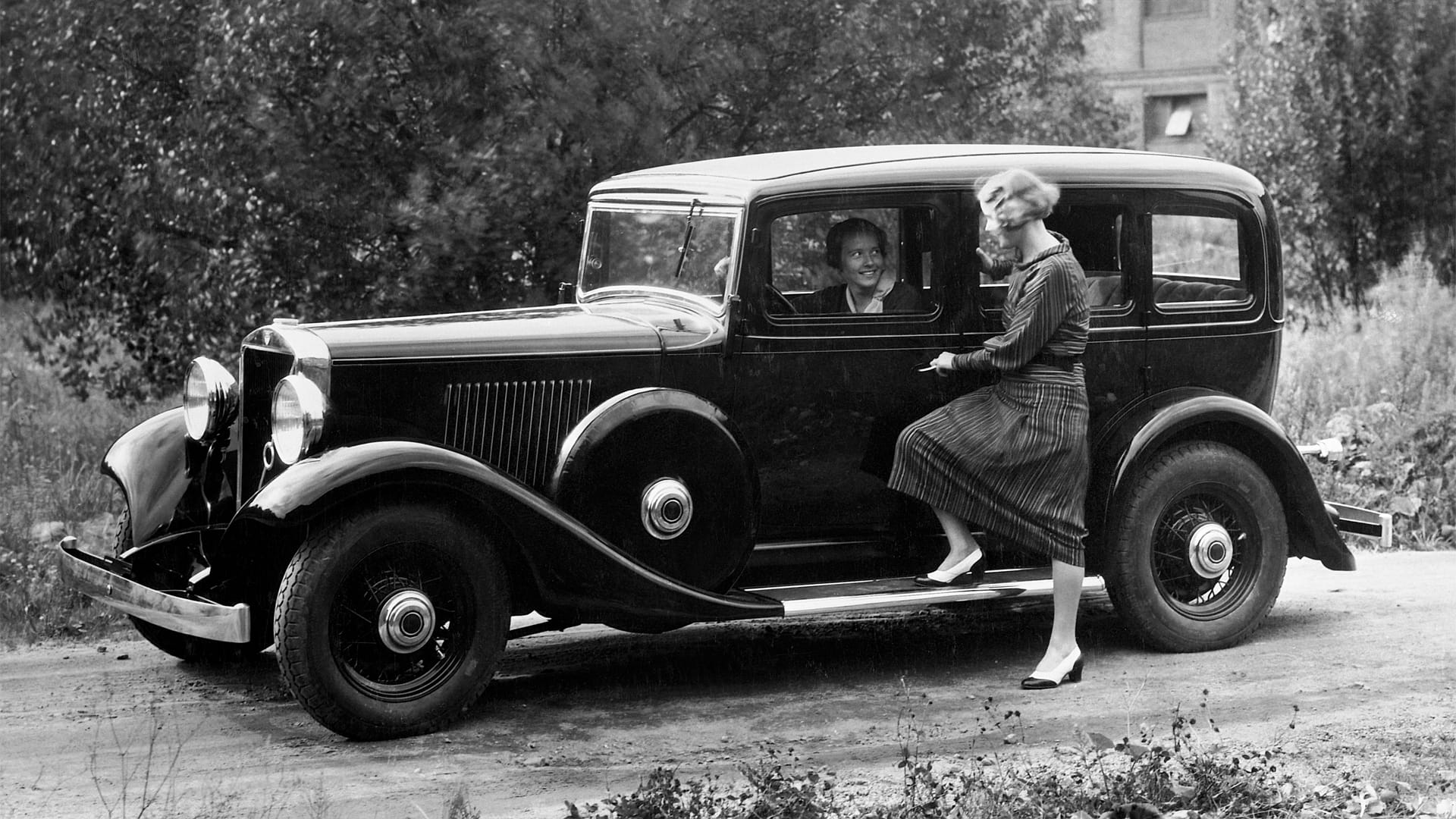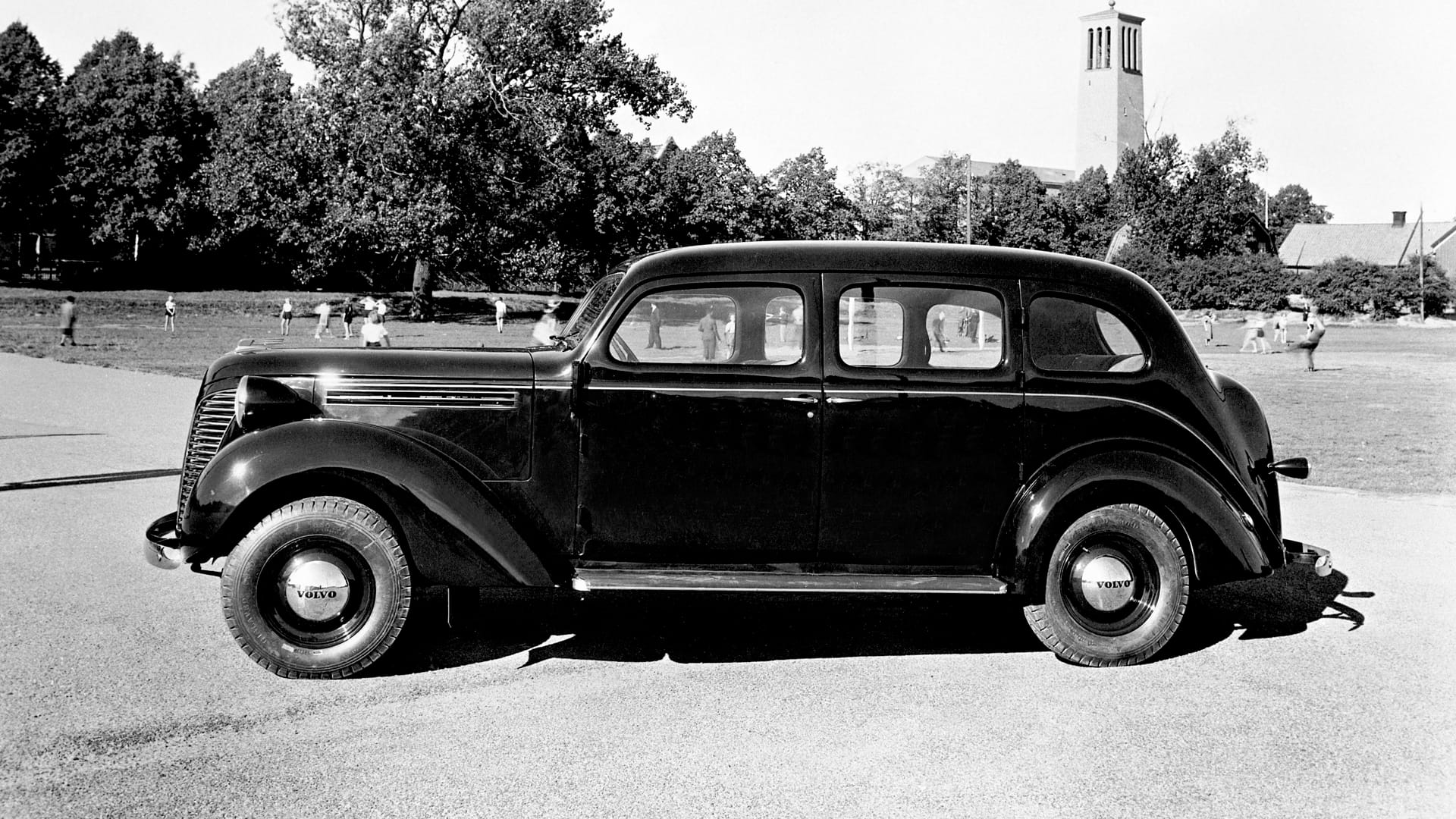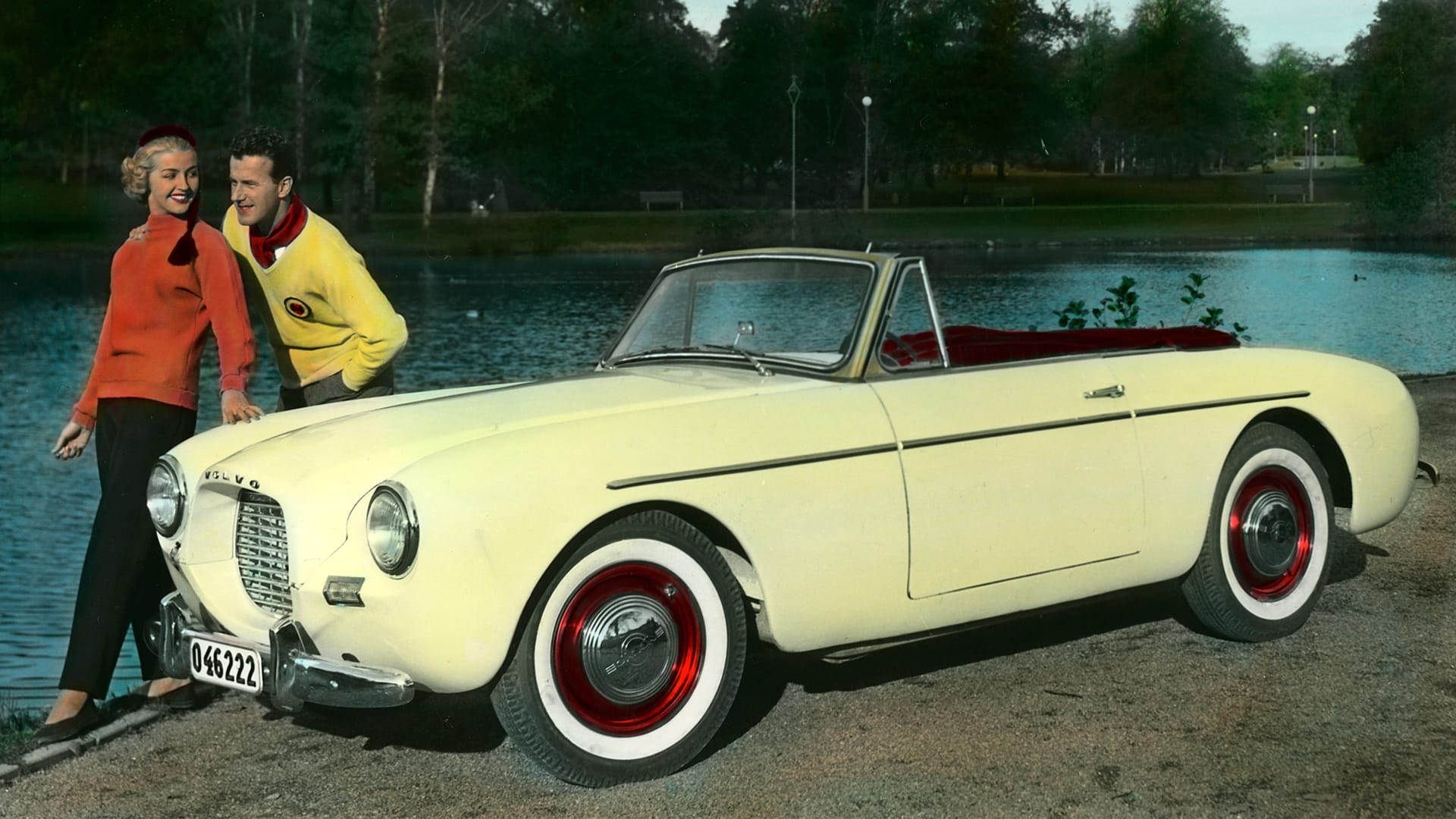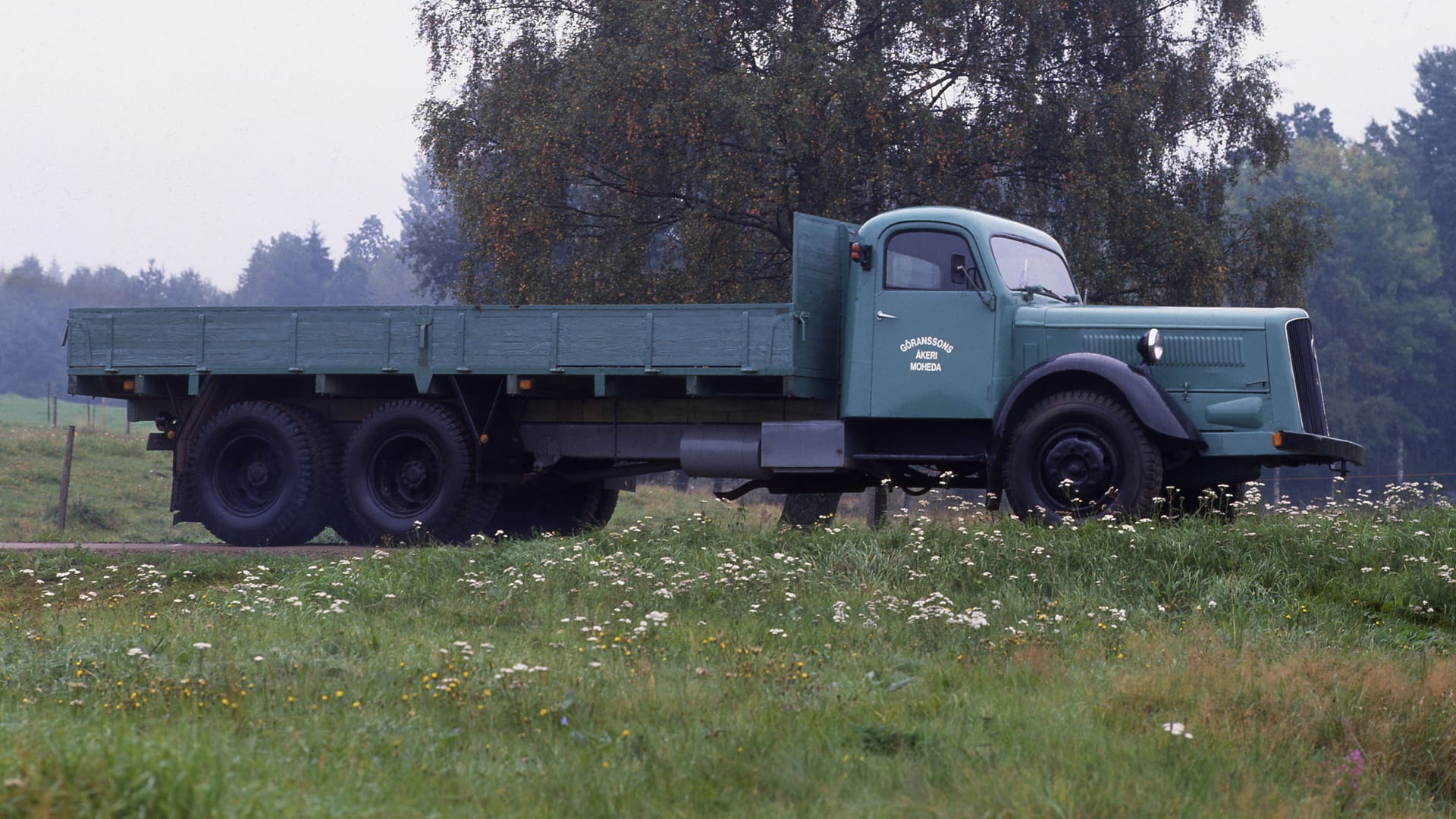Volvo F83

Keeping it cool
The first true ice cream trucks arrive in the 1960s. Previously, ice cream is stored on dry ice, but these new vehicles feature a refrigerated compartment—as seen in this 1968 Volvo F83.
The refrigerator keeps the temperature at minus 18 degrees, a few degrees below ice cream’s melting point. This truck operates in Jönköping and northern Småland, delivering ice cream to kiosks, gas stations, campgrounds, and stores. The F83, which changes its name from Trygge in 1965, is Volvo’s first truck with an in-house-produced steel cab. This ice cream truck’s cab suffers such severe rust damage that, during restoration, it is replaced with a matching cab from a military truck. This restoration also brings back the ice cream company's classic decoration.
Efficient design that stands the test
Volvo launches the F83 in 1957 under the name L430 Trygge. In 1965, System 8 introduces significant changes to Volvo’s trucks, prompting the name change to F83 (and its sibling model, Snabbe, changed to F82). However, these smaller truck models remain largely unchanged. Trygge and Snabbe already have a new diesel engine that improves efficiency, and their forward-control design provides longer flatbeds and better weight distribution. Further updates are deemed unnecessary, especially given their modest production volumes. Volvo manufactures 11,567 units of the F83.
Steel, innovation and a new era for truck cabs
So far, Volvo’s business model for trucks involves producing the chassis and engine, while customers order a cabin in wood or plywood from the numerous independent bodybuilders still active in Sweden.
When Trygge and Snabbe are introduced, the major innovation is Volvo’s self-produced cabin. It is made of steel at Olofström Bruk, which Volvo acquires in 1969, enabling the company to produce its own steel cabins. The idea comes from Helmer Petterson, who works on various projects within Volvo’s development department. A few years earlier, he also proposes the concept for a new, smaller passenger car model, which later becomes the PV444.
In the early 1950s, Petterson presents Volvo’s management with the idea of manufacturing an entirely new truck, larger than the existing LV340 series. He aims to drive a revolutionairy shift: Volvo designing and engineering its own cabin, which would also be manufactured at Olofström Bruk, already responsible for producing other components for Volvo.
A scoop of choices for short and long hauls
From 1963, Trygge and Snabbe are equipped with Ford diesel engines, which are replaced in 1967 by Perkins D39 engines – the engine used in this ice cream truck. The 3.86-litre, 90-horsepower engine offers a top speed of 82 km/h, at least according to the brochures. These also highlight a 5,600-kilo payload and practical features like a coat hook and an ashtray within easy reach.
For those who prefer power, the B36AV petrol V8 remains an option, known for its strong performance but also its thirst for fuel.bThe V8 remains popular since these smaller trucks typically cover short distances, keeping fuel costs manageable. The ice cream truck, however, travels further, often delivering to places like Vetlanda, Nässjö, or Anderstorp, where the diesel engine proves more efficient.
Keeping it cool
Transporting ice cream is a delicate task – if it gets too warm, moisture in the air creates ice crystals. The importance of proper ice cream handling is recognised as early as 1734 when the French confectioner René Antoine Ferchault de Réaumur publishes a guide on preventing ice formation. Early ice cream trucks rely on dry ice, but the Volvo F83 is part of a new generation of purpose-built vehicles, which become popular in the 1950s and 1960s, before home freezers are widespread.
Ice-cold precision for perfect ice cream delivery
The Volvo ice cream truck features a storage compartment on its flatbed, manufactured by Junekarosserier in Jönköping. The cooling system relies on thermal plates installed in the roof, which contain pipes filled with Freon gas. Surrounding these pipes is a mixture of glycol and oil. Overnight, the liquid is chilled to -30 to -35°C. The ice cream is loaded into the compartment in the evening, where it freezes along with the interior air.
By morning, the truck is ready to deliver ice cream to kiosks, petrol stations, campsites, and shops. The storage compartment includes six freezer sections, each capable of holding ice cream in 4–5 different flavours. Since the melting point of ice cream is -16°C, the compartment maintains a temperature of -18°C to provide a safety margin. This temperature is easily monitored, unlike earlier trucks that relied on dry ice.
When the ice cream is carried into its destination, it is tightly packed in corrugated cardboard to further protect it from moisture.
Reviving the ice cream truck with classic livery
The ice cream truck operates full-time for GB Glass during the 1970s, covering approximately 15,000 kilometres per year. Later, it is only used for special occasions, such as trade fairs at Elmia and school graduations. After spending many years in storage, the truck is eventually brought back into use, but by then, its steel cabin has unfortunately rusted beyond repair.
Bengt Karlsson, the former owner of GB Grossisten in Jönköping and the original driver of the truck during its heyday, manages to locate a military truck that had been used by the army on Gotland and purchases it. The cabin is replaced, the brakes and chassis are refurbished, and the truck is finally restored with the same GB livery it proudly displayed during the 1970s and 80s.
BILD
Ice cream history blending times and flavour
GB (Glace-Bolaget) is founded in 1942 when Mjölkcentralen and Choklad-Thule acquire Alaska-Glass. The new company is named Glace-Bolaget AB. Of course, the history of ice cream goes back much further. Ancient Chinese texts describe a type of frozen treat made from fruit juice and snow, but what we would recognise as ice cream likely emerges in the first half of the 17th century when one of Catherine de' Medici’s pastry chefs freezes fruit purée or juice. Ice cream then spreads to France. The first ice cream parlour is believed to be Café Procopé in Paris, which opens in the 1600s and still exists today – though now as a restaurant.
